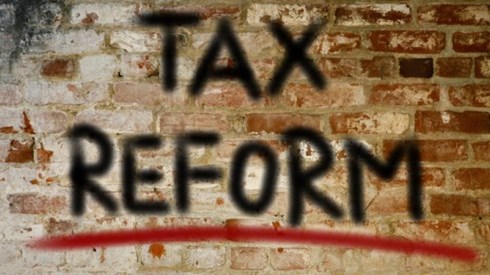Eversheds Sutherland Observations on the Unified Tax Framework

Robb S. Chase II , H. Karl Zeswitz , Taylor M. Kiessig , Daniel R. B. Nicholas | October 04, 2017

Treasury Secretary Steven Mnuchin, National Economic Council Director Gary Cohn, House Speaker Paul Ryan, Senate Majority Leader Mitch McConnell, House Ways and Means Committee Chairman Kevin Brady, and Senate Finance Committee Chairman Orrin Hatch, referred to by major media outlets as the "Big Six," have spent several months seeking consensus on a unified Republican framework for comprehensive tax reform. On September 27, 2017, the Big Six released the Unified Framework for Fixing Our Broken Tax Code (the framework), which is intended to serve as a "template" for the tax-writing committees, the House Ways and Means Committee, and the Senate Finance Committee (together, the committees) to draft tax reform legislation.
The framework positions the effort as providing tax relief for the middle class and US businesses with the goals of increasing economic growth and providing additional domestic jobs. To this end, the framework identifies significant reductions in taxes. However, the framework generally leaves to the committees the difficult job of identifying revenue raisers to pay for these reductions.
Eversheds Sutherland Observation: The framework is a starting point. Many details are yet to be ironed out, and significant modifications are certain to be made as the committees move forward. Republicans aim to pass a tax bill by the end of the year, with the hope that legislation could be signed by the president shortly thereafter. Given the comprehensive changes contemplated by the framework, individuals and businesses will need to carefully follow (and consider steps to mitigate) the potential impact of any legislation emerging from the committees on the basis of this template.
Proposed Taxation of Individuals
- Consolidates the current 7 tax brackets for individuals into 3, as follows: 12 percent, 25
percent, and 35 percent. Currently, individual rates range from 10 percent to 39.6 percent.
- Contemplates an additional rate that may apply to the highest-income taxpayers "to ensure the reformed tax code is at least as progressive as the existing tax code."
- Nearly doubles the standard deduction to $24,000 for married taxpayers filing jointly and
$12,000 for single filers, while eliminating personal exemptions.
- Announces an unspecified increase in the child care tax credit and increases the income level at which the credit begins to phase out. Provides a nonrefundable credit of $500 for non-child dependents (e.g., elderly dependents).
- Eliminates "most" itemized deductions without specifying which ones but retains the home mortgage interest expense and the charitable contribution deduction.
Eversheds Sutherland Observation: The state and local tax deduction is not directly addressed but presumably would be eliminated.
- Eliminates the alternative minimum tax.
- Retains "tax benefits that encourage work, higher education, and retirement security."
- Envisions that reform "will aim to maintain or raise retirement plan participation of workers and resources available for retirement."
- Repeals the estate tax and the generation-skipping transfer tax.
Eversheds Sutherland Observation: The framework appears to purposely link individual and business tax reform and describes the initiative as an effort to provide tax relief to the middle class. In light of this goal, it would be difficult for the committees to pursue a stand-alone business tax reform.
Proposed Taxation of Domestic Businesses
- Reduces the corporate tax rate from 35 percent to 20 percent (below the average corporate
tax rate in the industrial world).
- "Aims" to eliminate the corporate alternative minimum tax.
- Directs the committees to consider other methods of reducing the double taxation of corporate income (e.g., Chairman Hatch's partial dividends paid deduction).
- Subjects income from "small and family-owned businesses" that are conducted as sole
proprietorships, partnerships, or S corporations to tax at a maximum tax rate of 25 percent.
- Directs the committees to adopt measures to prevent individuals from characterizing personal income (potentially subject to a tax rate of 35 percent or higher) as business income (subject to tax at a maximum rate of 25 percent).
- Permits full expensing of investments in depreciable assets other than structures made after September 27, 2017, for a minimum of 5 years.
- "Partially" limits deductions for net interest expense incurred by C corporations.
- Directs the committees to consider the treatment of interest paid by non-corporate taxpayers.
- Envisions the elimination of most special exclusions, deductions, and credits.
- Specifically, eliminates the section 199 domestic production activities deduction on the basis that its need is eliminated with the lower overall rate.
- Preserves the research and development and low-income housing tax credits.
- Contemplates that special tax regimes governing certain industries and sectors will be "modernized."
Eversheds Sutherland Observation: Whether for political or policy reasons, real estate is not a "big winner" under the framework. The "full expensing" proposal excludes "structures"; the framework punts to the committees on whether the interest deduction will be limited for non-corporate taxpayers; and it is unclear whether the 25 percent pass-through rate will benefit many real estate enterprises.
Proposed Taxation of Multinational Businesses
- Transitions to a territorial system:
- Provides a 100 percent exemption for dividends from foreign subsidiaries in which the US parent owns at least 10 percent.
- Treats accumulated foreign profits as repatriated, with earnings held in cash or cash equivalents subject to tax at a higher rate than earnings held in illiquid assets, and the payment of the tax liability is spread over several years.
- While shifting to a territorial system, contemplates protecting the "US tax base by taxing at a reduced rate and on a global basis the foreign profits of US multinational corporations."
- Directs the committees to draft rules to "level the playing field" between US-parented and foreign-parented multinationals.
Eversheds Sutherland Observation: Although the framework does not provide specifics on the measure to protect the US tax base, presumably it is consistent with prior anti-base erosion proposals contemplating a minimum tax on earnings of foreign subsidiaries.

If you have any questions about this article, please feel free to contact Robert S. Chase II by telephone, (202) 383–0194, or email; H. Karl Zeswitz by telephone, (202) 383–0518, or email; Taylor M. Kiessig by telephone, (202) 383–0844, or email; or Daniel R.B. Nicholas by telephone, (202) 383–0876, or email.
(Reprinted with the permission of Eversheds Sutherland.)
Robb S. Chase II , H. Karl Zeswitz , Taylor M. Kiessig , Daniel R. B. Nicholas | October 04, 2017